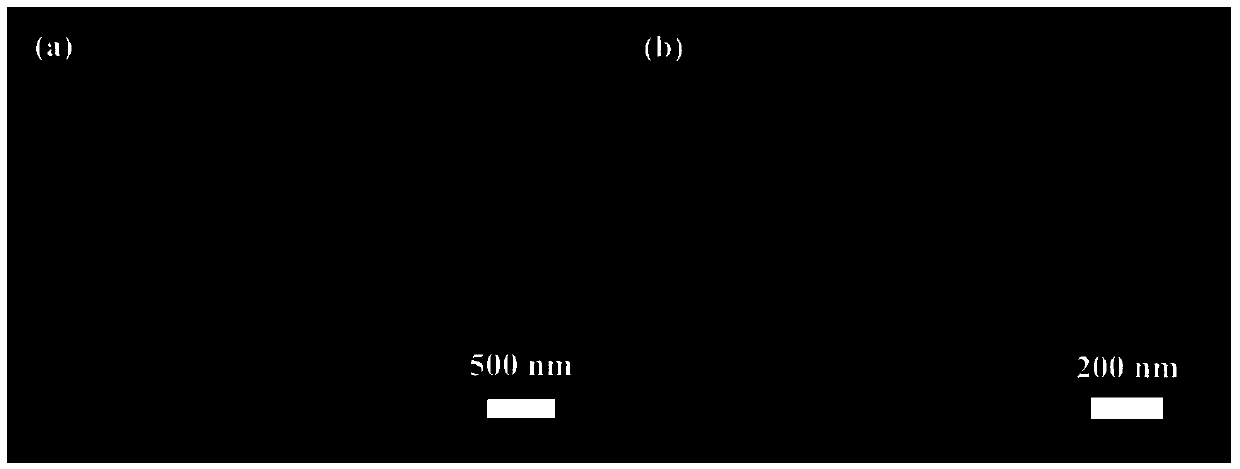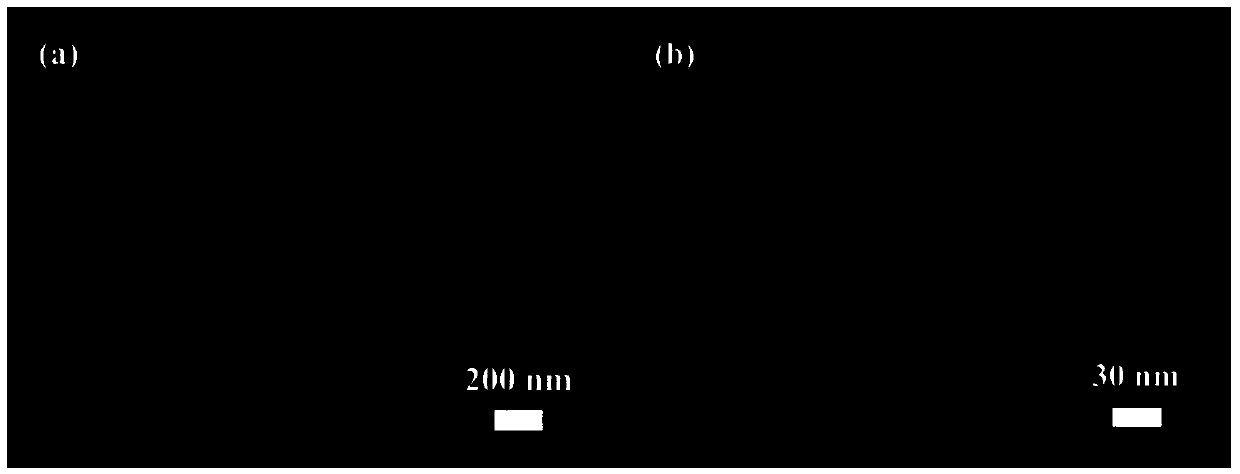Synthetic method of novel ordered macroporous-mesoporous-microporous hierarchical porous silicon-aluminium molecular sieve
A silica-alumina molecular sieve and microporous molecular sieve technology, applied in molecular sieve catalysts, chemical instruments and methods, crystalline aluminosilicate zeolites, etc., can solve problems such as limitations, improve catalytic activity, improve molecular flow and diffusion performance, shorten material The effect of the transmission path
- Summary
- Abstract
- Description
- Claims
- Application Information
AI Technical Summary
Problems solved by technology
Method used
Image
Examples
Embodiment 1
[0040] Add 20g of 500nm polystyrene microspheres with uniform particle size, 3g of 20nm silica nanospheres, and 3g of sucrose to 400g of ultrapure water for 1h to make them uniformly dispersed, evaporate and self-assemble at 60°C for 12h, then add 0.3 After the initial carbonization at 100°C for 6h and the secondary carbonization at 160°C for 6h after g concentrated sulfuric acid, a precursor material mixed with polystyrene microspheres / silica nanospheres / carbon was obtained. The above-mentioned precursor material is added to the aqueous solution of sodium metaaluminate and tetrapropyl ammonium hydroxide (0.082g sodium metaaluminate+30ml1M tetrapropyl ammonium hydroxide aqueous solution+30ml DI H 2 O) After fully stirring at 20°C for 2h, vacuum rotary evaporation at a speed of 1r / s at a temperature of 60°C for 2h to remove water molecules in the mixed system, so that aluminum ions and structure-directing agent molecules can be uniformly infiltrated into the precursor system. T...
Embodiment 2
[0042] Add 28g of 100nm polymethyl methacrylate microspheres with uniform particle size, 4g of 5nm silica nanospheres, and 3.2g of glucose into 550g of ultrapure water for 2h to make them uniformly dispersed, and evaporate and self-assemble at 40°C for 48h Finally, after adding 0.32g of concentrated sulfuric acid, primary carbonization at 110°C for 5h and secondary carbonization at 150°C for 8h, the precursor material of polymethyl methacrylate microsphere / silica nanosphere / carbon mixture was obtained. The above-mentioned precursor material is added to the aqueous solution of aluminum isopropoxide and tetrapropyl ammonium hydroxide (0.08g aluminum isopropoxide+40ml1M tetrapropyl ammonium hydroxide aqueous solution+80ml DI H 2 O) After fully stirring at 30°C for 1h, vacuum rotary evaporation at a speed of 2r / s at a temperature of 70°C for 1.5h to remove water molecules in the mixed system, so that aluminum ions and structure-directing agent molecules can be uniformly infiltrated...
Embodiment 3
[0044] Add 8g of 300nm carbon microspheres with uniform particle size, 1g of 20nm silica nanospheres, and 1.2g of fructose to 80g of ultrapure water for 0.5h to make them uniformly dispersed, evaporate and self-assemble at 50°C for 12h, then add 0.12 After g concentrated sulfuric acid, initial carbonization at 80°C for 8h and secondary carbonization at 180°C for 4h to obtain a carbon microsphere / silica nanosphere / carbon mixed precursor material. The above precursor material was added to an aqueous solution of aluminum sulfate and tetrapropylammonium bromide (0.06g aluminum isopropoxide+2.66g tetrapropylammonium bromide+15ml DI H 2 O) After fully stirring at 15°C for 2h, vacuum rotary evaporation at a speed of 2r / s at a temperature of 50°C for 1h to remove water molecules in the mixed system, so that aluminum ions and structure-directing agent molecules can be evenly infiltrated into the precursor system. The above mixture was transferred to a 15mL autoclave, and crystallized a...
PUM
| Property | Measurement | Unit |
|---|---|---|
| pore size | aaaaa | aaaaa |
| pore size | aaaaa | aaaaa |
| particle diameter | aaaaa | aaaaa |
Abstract
Description
Claims
Application Information
 Login to View More
Login to View More - R&D
- Intellectual Property
- Life Sciences
- Materials
- Tech Scout
- Unparalleled Data Quality
- Higher Quality Content
- 60% Fewer Hallucinations
Browse by: Latest US Patents, China's latest patents, Technical Efficacy Thesaurus, Application Domain, Technology Topic, Popular Technical Reports.
© 2025 PatSnap. All rights reserved.Legal|Privacy policy|Modern Slavery Act Transparency Statement|Sitemap|About US| Contact US: help@patsnap.com



